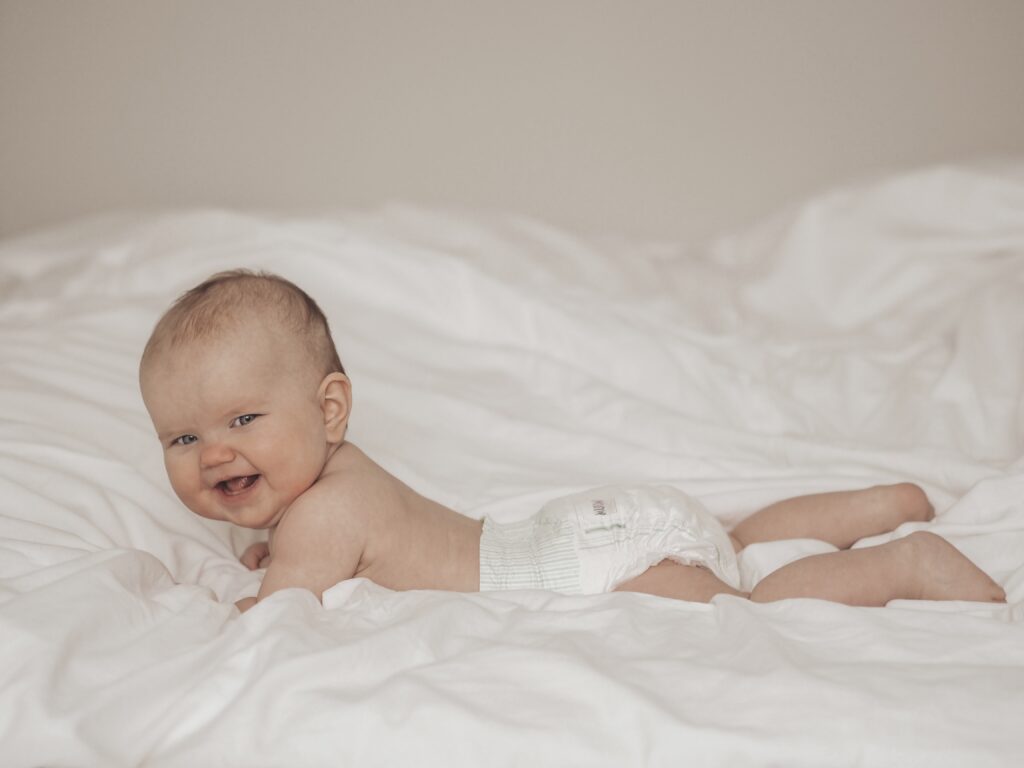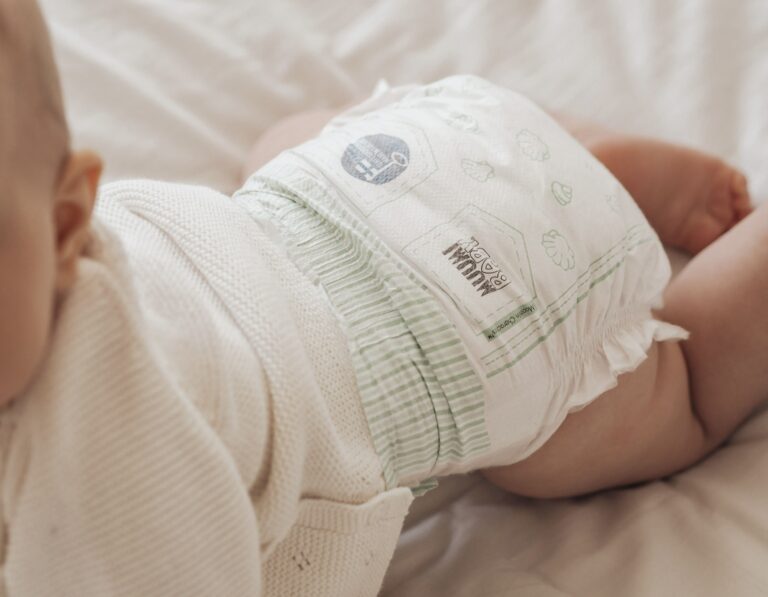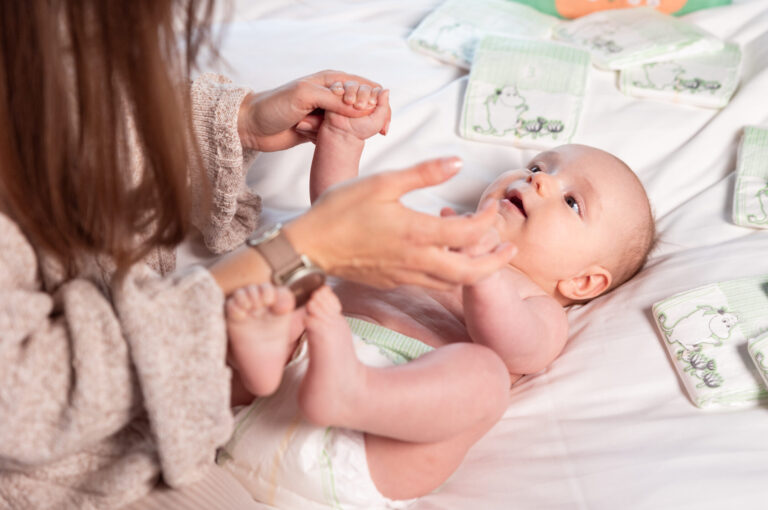Crawling is a major milestone in a baby’s life – it represents the first brave step towards independent movement. This natural stage of development is much more than just moving from place to place; it is the result of a complex interplay between motor skills, brain and muscles. In this article, we take a closer look at the world of crawling and explain how this skill lays the foundation for a child’s motor development. We also look at how parents can support their baby at this critical stage of development.
The importance of crawling for a baby’s motor development
The importance of crawling for a baby’s motor development is invaluable. It is one of the first major physical developmental steps a baby takes, and it serves as a foundation for many other motor skills. Crawling strengthens the muscles in a baby’s arms, legs, shoulders and mid-body, which is important for the development of balance and coordination.
Crawling also promotes the development of neural connections between the two hemispheres of the brain, which is important for cognitive functions such as perception and problem-solving skills. It also helps children to better perceive their environment and develop their space awareness as they move around the floor and learn to navigate around obstacles. Crawling allows children to explore the world independently, which encourages their curiosity and self-confidence. The role of this developmental stage is therefore multifaceted, supporting arm and leg strength, mobility, and neurological and cognitive development.
How does crawling prepare for walking?
Crawling prepares a child to walk in many ways and is a critical step in motor development. It develops strength and coordination, which are essential for achieving the skill of walking. When a baby crawls, they use both their arms and legs, strengthening muscles and joints that are essential for maintaining an upright posture and balance. In addition, crawling requires the baby to use both sides of their body together, which improves bilateral motor skills and the baby’s ability to control their movements.
This development of body control is essential for your baby to learn to control their movements and to make a smooth transition to walking. Crawling is the key to this, as it helps the baby to practise one leg at a time, which is important for learning to walk. Crawling also supports brain development by activating sensory and motor neural connections. These neural pathways are essential for the development of cognitive functions such as space perception. Therefore, supporting crawling is not only a physical preparation for walking, but also promotes brain growth and development, which is essential for learning more complex motor skills.
Age and starting to crawl: When to expect your first movements?
The age of babies and when they start crawling vary from one individual to another. Most babies start crawling between six and ten months of age, but others may start earlier or later. It is also possible that some babies skip the early crawling phase altogether and move straight to fully crawling or walking. It is important to remember that children’s development does not follow a well-defined timetable and it is normal for there to be variations in developmental progress. Parents and carers can usually expect the first crawling movements to occur when the baby has developed sufficient upper body strength and control to lift their chest off the ground and can support themselves with their arms. If your baby is not crawling according to the ‘timetable’, it is a good idea to talk to your pediatrician, who can assess your baby’s overall development and suggest ways to support motor development if necessary.
For more information on baby’s developmental stages, click here!
As your baby progresses, it’s important to celebrate even small achievements, as positive reinforcement encourages your child to keep practising a new skill.
Support and encouragement during crawling
Support and encouragement during crawling are essential for your baby’s motor development. By gently encouraging the baby and providing a safe training platform, parents can help the baby to become familiar with a new way of moving. One effective way is to encourage crawling through play – for example, by placing a favourite toy or a parent’s face slightly out of reach to encourage the baby to reach for it. As your baby progresses, it is important to celebrate even small achievements, as positive reinforcement encourages your child to continue practising the new skill.
It is also important to monitor your baby during crawling to make sure they are safe and can get help if needed. Physical support, such as holding the baby gently by the pelvic area or providing a soft roll or pillow under the baby’s tummy, can help the baby maintain a crawling position and encourage movement. For motor development, it is preferable to provide plenty of practice time on the floor where the baby can move freely and explore their environment. It is important to listen to the baby’s needs and keep the training comfortable so that the baby associates crawling and movement with joy and a sense of independence.
A safe environment for crawling
When your baby starts to crawl, safety is of the utmost importance, as a moving child can quickly get into dangerous situations. Parents and carers should ensure that the baby’s environment is both safe and encouraging. This means that all potentially dangerous objects, such as breakable objects, toxic substances and small loose items that can pose a choking hazard, should be removed from the baby’s reach or protected. Sharp corners should also be cushioned or protected.
The floor should be clean and warm, providing enough softness but firm enough to support the baby’s movement. In addition, make sure sockets are protected and cables are hidden or shielded to keep them out of the baby’s reach. At the foot of the stairs and in other dangerous areas, it is advisable to install gates or other barriers to prevent the baby from reaching them. It is reasonable to think about baby safety at the ground level, because things look different from the baby’s point of view. One day invested in safety can help prevent many of the accidents that can happen when a curious baby explores their world through crawling.

Common concerns: When the baby does not crawl
It is perfectly normal for parents to feel anxious if their baby is not crawling “on schedule” or at all. It is important to note that although crawling is a typical developmental stage, children are individuals and the timing of motor development varies widely. Some children skip the early crawling stage altogether and move straight into fully crawling. This does not always need to be a cause for concern. Some babies develop other skills, such as sitting or standing, before they begin to move independently.
However, if there is cause for concern, for example your baby is not moving at all or not using both sides of the body symmetrically, it is advisable to discuss this with a healthcare professional. A pediatrician or specialist can check whether there are any developmental delays that need further assessment or specialist support. In some cases, early intervention and physiotherapy may be helpful. It is important to remember that each child develops at their own pace and that support and love are the most important factors in supporting their growth and development.
Crawling options: Fully crawling and other forms of mobility
Although crawling is a common way for children to move around, there are many other ways for children to move from one place to another. Some babies crawl traditionally on their elbows and knees, while others pull themselves forward on their stomachs. There are also other creative ways of moving: for example, some children may find it common to bend their buttocks forward or move on all fours with their legs and arms straight.
It is important to understand that these different ways of moving are individual and do not necessarily indicate developmental problems. Rather, they are creative ways of adapting to and exploring the environment. The key is that the child uses and develops their muscles and motor skills, laying the foundation for future physical development, including eventually learning to walk. Parents and carers have a role to play in supporting children’s movement, whatever form it takes, and ensuring that it takes place in a safe environment.
Toys can encourage your baby to move forward.
Toys and games that encourage crawling
Playtime is a natural way to encourage babies to move and develop their motor skills, including crawling. Safe toys that appeal to babies and encourage them to move are a good way to promote crawling. A play mat or other comfortable, soft surface can give them space to explore and play while crawling. Toys that roll or move, such as balls or toy cars, can be used to tempt the baby to chase them, stimulating crawling reflexes.
Toys that encourage babies to reach out or reach for objects, such as tunnels or soft obstacles, can also encourage them to move forward. Noises and flashing lights in toys can attract the baby’s attention and motivate them to move towards them. It is important to choose toys that are appropriate for age and development and to ensure that they are safe, i.e. do not have small parts that can fall off or get into the baby’s mouth. Through play and toys, babies not only learn to crawl, they also learn cause and effect relationships and develop cognitive skills while their motor skills grow.
Check out our advice on playing with your child here!
How do Moomin Baby diapers support your baby to crawl?
Finnish Moomin Baby diapers offer your baby support for crawling in many ways. These diapers are designed for safety and comfort, promoting baby’s mobility and activity. Designed to give your baby freedom of movement, the diapers are flexible and enable natural movements during crawling. Optimal fit and discreetness ensure that baby can move freely without restriction. In addition, the diapers are made of skin-friendly materials that reduce skin irritation and ensure comfort for the baby.
Moomin Baby diapers provide effective protection against leaks, which is especially important with an actively moving baby. The high quality and breathable materials ensure that the diapers do not leak through and keep baby’s skin dry and healthy. This increases baby’s comfort and encourages them to keep moving. The diapers also feature high quality side elastication, which allows easy fitting around the baby’s body and ensures that the diaper stays in place without hindering the baby’s movement. The Moomin Baby diapers therefore provide support and comfort for a crawling baby, thus contributing to their motor development.
We welcome you to try Moomin Baby diapers by ordering your free Diaper Hero sample here!










